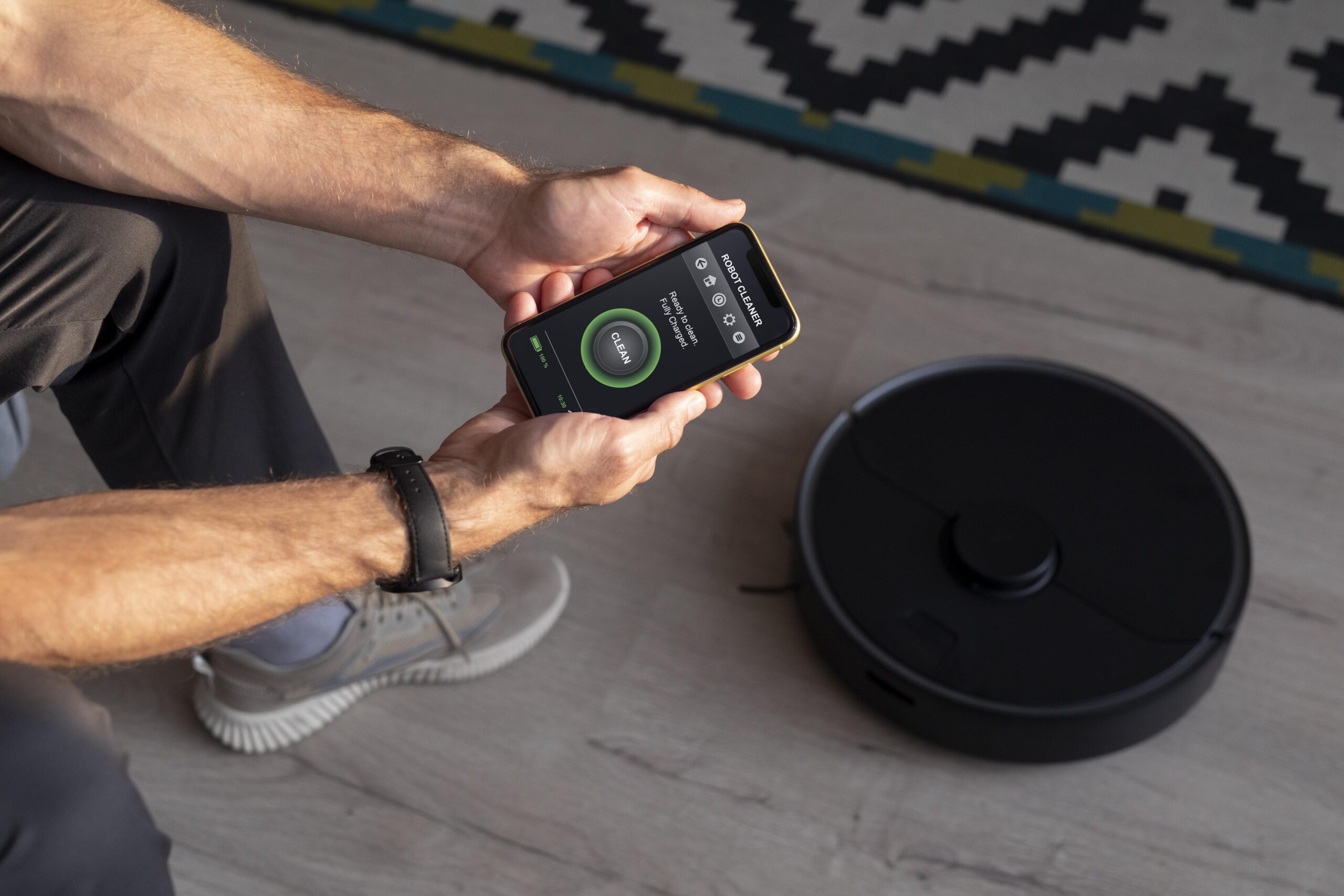For years, the promise of the smart home has been a symphony of voice commands, smartphone taps, and automated routines. We’ve grown accustomed to speaking into the void to adjust a thermostat or fumbling for an app to dim the lights. While convenient, this model of interaction places the burden of command squarely on us. It’s a responsive home, but is it an intelligent one? What if the very fabric of your living space could anticipate your needs, responding not to your voice, but to your presence and movement alone? What if the transition from a lit room to a dark hallway was seamlessly bridged not by a clap or a keyword, but by the simple, silent act of walking?
This is the next frontier of domestic living, a shift from commanded control to ambient, automated intelligence. The breakthrough lies not in devices we hold or speak to, but in a foundation we walk upon every day. Advanced floor and carpet sensing technology, powered by sophisticated AI, is emerging as the cornerstone of this paradigm shift. By turning the entire surface of a home into a sensitive, adaptive membrane, this innovation is paving the way for a truly integrated and effortless smart lifestyle. Pioneers in this field, like TiveTech from Amsterdam, are at the forefront of this quiet revolution, demonstrating that the most profound smart home innovation is one you never see, but always feel.
Overcoming Limitations of Traditional Smart Homes Through Ambient Intelligence
The first wave of smart home technology brought undeniable convenience. We gained remote control over our lights, locks, and entertainment systems. Yet, this model has inherent limitations that are becoming increasingly apparent. The very tools designed to simplify our lives can sometimes add a layer of digital complexity.
- Reducing User Interaction Fatigue in Smart Homes
Constant verbal commands or the need to unlock a phone and navigate an app to perform a basic action, like turning on a light, can become intrusive. It breaks the natural flow of daily life. The technology, rather than fading into the background, constantly demands our attention.
- The Reactive Model
Most conventional systems are fundamentally reactive. A motion sensor turns on a light after you’ve entered a dark room. A smart thermostat adjusts after you’ve felt too cold. They wait for a command or a blunt trigger, lacking the contextual awareness to act proactively.
- Bridging the Gap with Ambient Intelligence
For automation to feel truly magical, it must be anticipatory. It should understand your routines, your presence, and your movements without explicit instruction. This concept, known as “ambient intelligence,” is where technology becomes so seamlessly integrated into our environment that it is effectively invisible.
This is where the need for a foundational sensing layer becomes critical. Walls have limited surface area, and ceilings offer a limited perspective. The floor, however, is the universal interface of a home, every occupant, from family members to pets, interacts with it constantly. By embedding intelligence directly into the floors and carpets, we create a continuous, non-intrusive data stream about activity within the home. This adaptive sensing capability is the missing link required to move from a collection of smart devices to a cohesive, intelligent ecosystem, forming the very bedrock of a sophisticated smart living environment.
How AI-Enabled Smart Floors Transform Everyday Spaces
The concept of a floor that can “feel” may sound like science fiction, but the underlying principle is both elegant and based on established physics, taken to a revolutionary new level. The core technology leveraged by leaders like TiveTech is advanced capacitive sensing.
Imagine the touchscreen of your smartphone. It detects your finger’s presence through a subtle change in an electrical field. Now, scale that principle to cover an entire room, imbue it with vastly greater sensitivity, and pair it with artificial intelligence. That is the essence of modern intelligent floor and carpet sensing.
Here’s a simplified breakdown of the process:
- Establishing a Continuous Sensing Network Underfoot
A grid of extremely thin, durable, and safe sensor layers is installed beneath the floor covering, whether it’s under carpet, laminate, hardwood, or tile. These sensors generate a low-energy electromagnetic field across the floor’s surface.
- Detecting Movement Through Advanced Capacitive Sensing
When a person or object steps into this field, it causes a measurable disturbance, a shift in capacitance. This disturbance is instantly detected by the sensor grid.
- AI-Driven Analysis for Contextual Understanding
This is where the magic happens. The raw data from the sensors is far more than a simple “on/off” signal. It is a rich stream of information that a proprietary AI platform, like the one developed by TiveTech, analyzes in real-time. The system can learn to distinguish between different types of disturbances, identifying:
- Precise Presence and Location: Knowing not just that someone is in a room, but exactly where they are standing.
- Direction and Speed: Tracking the path and pace of movement as a person walks from the living room to the kitchen.
- Gait and even Falls: Recognizing unique walking patterns and identifying anomalies suggestive of a slip or fall, a critical safety feature.
This is not mere motion detection; it is nuanced, contextual activity pattern recognition. It’s the difference between a system that knows “motion detected” and one that understands “the resident is walking slowly from the bedroom to the bathroom at 2 AM.” This deep, reliable data is what enables a truly responsive and automated home, making it a superior Smart Home solution compared to older, less precise technologies.
Enhancing Home Comfort and Efficiency with Intelligent Floor Sensing
With a silent, intelligent floor gathering continuous, contextual data, the home transforms from a passive container into an active partner in comfort and efficiency. The most immediate and impactful application of this technology is in the realm of automated environmental control. This is where the promise of a smart lifestyle becomes a tangible, daily reality.
Let’s visualize a few scenarios:
- Seamless Nighttime Lighting Adjustments
You get out of bed at night to get a glass of water. As your feet touch the floor, the system identifies your movement. Before you even reach the doorway, a soft, pathway light gently illuminates your route to the kitchen, brightening just enough for safety without being jarring. The lights behind you fade as you pass, and the home returns to its quiet, dark state once you are back in bed. There was no fumbling for switches, no blinding glare, just seamless, thoughtful illumination.
- Optimizing Climate Control Based on Room Occupancy
Traditional thermostats often heat or cool the entire house based on a single sensor’s reading. An intelligent home with floor sensing understands occupancy on a room-by-room basis. If you spend your afternoon in the home office, the system ensures that room is at your perfect temperature, while allowing less-frequented spaces to drift to an energy-saving setback. When you move to the living room in the evening, the climate control follows you. This hyper-efficient approach eliminates wasted energy, significantly reducing utility bills and aligning with a sustainable smart living philosophy.
- Intelligent Energy Management During Absence
The system’s sophisticated presence detection means it knows with high certainty when the home is empty. It can then automatically initiate a full “away” mode, powering down non-essential systems, adjusting the thermostat to a broad energy-saving range, and ensuring lights are off. When the first resident returns, the system detects their unique gait as they approach the door and begins restoring the environment to their preferred “home” settings.
These examples are not futuristic fantasies; they are operational realities made possible by integrating carpet sensing and smart floor technologies. This level of automation delivers the ultimate home convenience, where the environment constantly and quietly adapts to the inhabitants, not the other way around.
Smart Floors for Safety, Health Monitoring, and Energy Optimization
While the comfort and convenience benefits are profound, the implications of intelligent flooring extend far beyond automated lighting and climate control. This technology creates a foundational layer that enhances safety, promotes wellness, and drives unprecedented efficiency.
- Advanced Home Safety Through Real-Time Monitoring
For families with elderly members living independently, an intelligent carpet can be a guardian. Its ability to detect anomalies like a fall, a sudden, uncharacteristic impact with the floor, can trigger immediate alerts to family or emergency services, enabling a rapid response that can save lives. Similarly, the system can be programmed to detect unexpected movement in specific areas, like a child entering a utility room or a basement, providing a discreet layer of internal security.
- Passive Health and Wellness Insights
Without the need for wearable devices or cameras, a smart floor can passively monitor long-term activity patterns. It can track trends in daily step counts within the home, changes in gait speed, or restlessness at night. This objective data can provide valuable, non-intrusive insights into a resident’s overall wellness and flag potential health issues for further discussion with a healthcare provider.
- Granular Energy Optimization for Sustainable Living
This is a core tenet of the technology. By providing granular, room-level occupancy data, the system empowers the home’s HVAC and lighting systems to operate with surgical precision. Energy is no longer wasted on empty spaces. This directly translates to a smaller carbon footprint and lower operating costs, perfectly aligning with TiveTech’s mission to solve real-world challenges with scalable, reliable, and efficient solutions. The home becomes not only smarter but also more sustainable, a key component of a modern, responsible smart lifestyle.
Final Verdict
The evolution of the smart home is moving away from screens and speakers and into the very materials that constitute our living spaces. The quest for the ultimate smart home innovation has led us to a simple yet profound realization: the most natural and universal interface in any home is the floor we walk on.
Technologies like the smart carpet and smart floor solutions developed by forward-thinking companies like TiveTech are not merely adding another gadget to the ecosystem; they are redefining the ecosystem itself. They provide the silent, constant, and contextual awareness that allows all other smart systems to work in harmonious concert. This creates a home that is an adaptive, responsive partner, a home that offers unparalleled home convenience, enhances personal safety, and promotes a sustainable lifestyle through intelligent environmental control.
The promise of a truly intelligent, automated home has been whispered for decades. We now know the answer wasn’t in the cloud above, but in the foundation below. The future of a seamless, effortless, and secure smart lifestyle is, quite literally, underfoot.
To learn more about how TiveTech is pioneering this new wave of adaptive sensing technology and its applications for creating intelligent, efficient, and safe living spaces, visit their website at tivetech.com



































